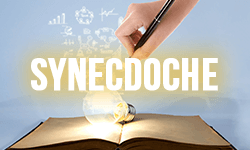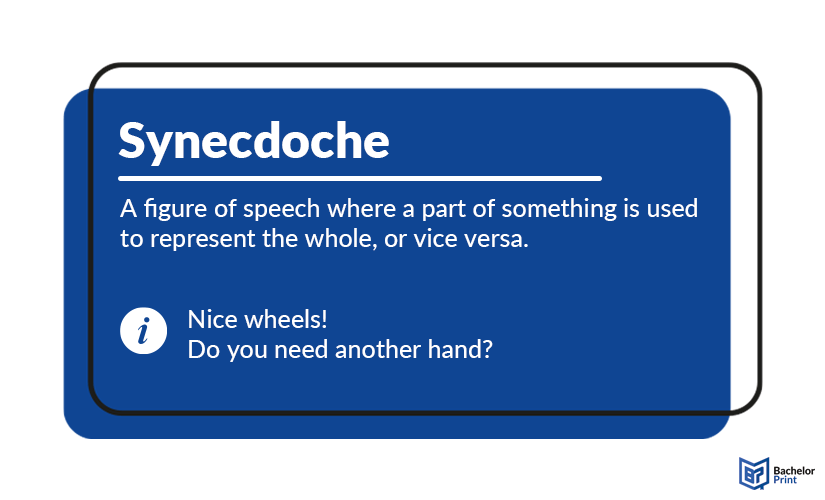
Using stylistic devices can greatly enhance your writing, allowing you to present yourself as a highly articulate individual. This applies not only to belletristic writing but also to academic writing, where deliberate language can convey complex ideas. The well-known saying “lend me your ears” means “give me your attention,” and it showcases a rhetorical device known as synecdoche. How to master synecdoches and what to use them for will be explained in the following article.
Definition: Synecdoche
A synecdoche (pronounced “suh-NEK-duh-kee”) is a stylistic device that refers to a part of something to describe the whole, which is why it can also be referred to by the Latin term “pars pro toto,” which means “part for the whole.” Conversely, in some cases, a whole can be used to describe just a part of it, which would then be called “totum pro partum,” a concept tied to the origin of synecdoche.
This word can also be adapted into different grammatical forms; as an adjective either synecdochic or synecdochical, or as an adverb, synecdochically. The examples below illustrate the meaning of this stylistic device.

- ✓ 3D live preview of your individual configuration
- ✓ Free express delivery for every single purchase
- ✓ Top-notch bindings with customised embossing

Synecdoche: Examples
In the following paragraph, you can see several examples of synecdoches to give you a better idea of this stylistic device and how to use it in a sentence structure.
Types
To better understand the relationship between parts and wholes, the different types of synecdoche can be divided into distinct categories.
Microcosm
Microcosm or part-for-whole is used when a small part represents an entire object or entity.
Macrocosm
Macrocosm or whole-for-part is when an entire object or entity represents just a part of it.
Contents
The container of something, referring to what is inside of it.
Materials
The material something is made of represents the object itself.
Singular
A singular form can represent a plural meaning, also known as “singulis pro plurali.”
Use and purpose
All stylistic devices are employed with a distinct purpose. In the case of the synecdoche, there are various reasons why authors may use it. The most common ones are as follows:
Purpose
- Highlights key aspects by focusing on a part that represents a larger whole.
- Creates striking mental images, making concepts relatable through familiar elements.
- Imbues deeper meaning using symbolism where one part represents a broad concept.
- Boosts dialogue by using idioms or colloquial terms that make language more engaging.
Examples
Synecdoche vs. metonymy
Synecdoche and metonymy are closely related in some points. Both of them replace one word for another, creating a distinct image in the reader’s head. However, in practice, they do have their differences.
While a synecdoche uses a part of something to describe the whole, a metonymy uses an entirely unrelated word that is merely associated with the respective thing. Thus, the metonymy is rather related to other stylistic devices like metaphors or symbolism than to the synecdoche, which bases itself on physical descriptions.
Antonomasia
An antonomasia is a special type of metonymy, where a specific name, phrase, or title is used to substitute a proper name. This often happens when brand-name products or characters get introduced to colloquial expressions. In some cases, an antonomasia can be considered a particular form of synecdoche, depending on interpretation.
FAQs
A synecdoche is a stylistic device that replaces a whole thing by naming only a part of it, or vice versa. The best example is using a human body part, while you actually nasty an entire human, e.g., “All eyes were on the speaker,” where “eyes” stands for the audience and emphasizes that everyone was watching.
While a synecdoche substitutes a whole by using a physical part of it, a metonymy uses something only symbolically related to the actual thing.
This idiom is a metonymy because the meaning suggests that you give someone your attention. The ears themselves are not a physical part of this attention, so they cannot be a synecdoche.
